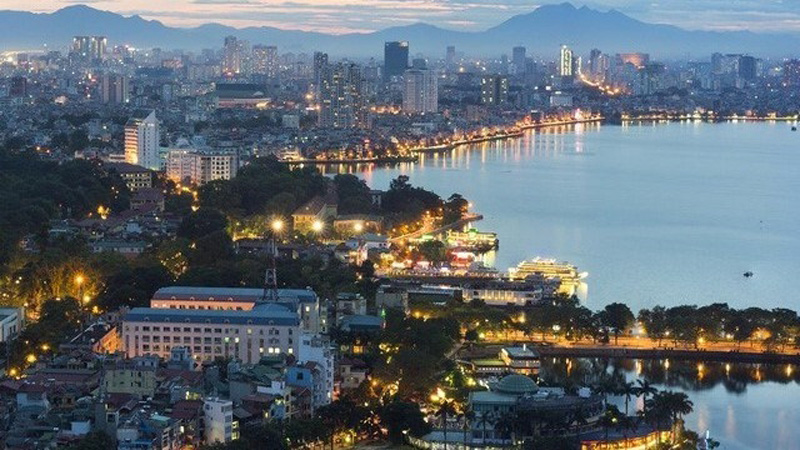
Vietnam’s capital city of Hanoi and the southern economic hub of Ho Chi Minh City are among the five biggest improvers of the quality of life over the past five years, according to the Global Liveability Index 2018 of the Economist Intelligence Unit (EIU) – a research and analysis division of the UK-based Economist Group.

A corner of Hanoi
(Photo: VNA)
This year, Hanoi was ranked 107th out of the 140 surveyed
countries with 59.7 points, up 5.5 percentage points, while Ho Chi Minh City
came in 116th with 57.1 points, up 4.4 percentage points.
The rapid economic development,
alongside the higher scores in the fields of recreational and art activities,
private education, and road infrastructure, were the main factors that helped
the Vietnamese cities increase their places in the ranking.
The ten most liveable cities are Vienna
(Austria), Melbourne (Australia), Osaka (Japan), Calgary (Canada), Sydney
(Australia), Vancouver (Canada), Toronto (Canada), Tokyo (Japan), Copenhagen
(Denmark) and Adelaide (Australia).
Those that score the best tend to be
mid-sized cities in wealthier countries, according to the survey.
Several cities in the top ten also have
relatively low population density. This can foster a range of recreational
activities without leading to high crime levels or overburdened infrastructure.
The ten least liveable cities are Dakar
(Senegal), Algiers (Algeria), Douala (Cameroon), Tripoli (Libya), Harare
(Zimbabwe), Port Moresby (Papua New Guinea), Karachi (Pakistan), Lagos
(Nigeria), Dhaka (Bangladesh) and Damascus (Syria).
The survey of liveable cities is conducted
annually based on various criteria such as stability, health care, culture, the
environment, education, and infrastructure.
Source: NDO
The Department of Education and Training of Hoa Binh province held a conference on March 18 to review the performance of the "Safe and Happy School" Project and set out tasks for 2025. The project, funded by the Taiwan Fund for Children and Families (TFCF), aims to create a safe, inclusive, and supportive learning environment for students. The event saw the attendance of representatives from the TFCF and 26 beneficiary schools.
With over 70% of their workers being women, trade unions across industrial parks (IPs) in Hoa Binh have been actively safeguarding their legal rights and interests while implementing initiatives to improve their income and well-being.
In recent years, the Hoa Binh provincial General Hospital has continuously innovated itself and improved the quality of medical services to meet the increasing needs of local people. With substantial investments in infrastructure and modern equipment, along with a team of highly qualified doctors and nurses, the hospital has gradually established itself as one of the leading medical units in the Northwestern region and a trusted destination for healthcare for people inside and outside the province.
From mastering the fundamentals of programming to achieving national recognition, the Programming Club of the Le Van Tam Primary School (STAR LVT28) in Hoa Binh city has made remarkable strides in the field of robotics.
The Ho Chi Minh Communist Youth Union Committee and the Vietnam Youth Federation chapter of Hoa Binh province organised a programme on March 12 to launch the "Digital Literacy" movement and an online quiz on the resolutions of the Vietnam Youth Federation congresses at all levels, as well as the Politburo's Resolution No. 57-NQ/TW on breakthroughs in the development of science, technology, innovation, and national digital transformation.
As climate change grows more unpredictable, the development of production forests has become essential - not just for economic growth, but for safeguarding the environment and maintaining ecosystem balance. By boosting local incomes, curbing natural disasters, preventing soil erosion, and protecting water resources, these forests play a crucial role in sustainable development.



